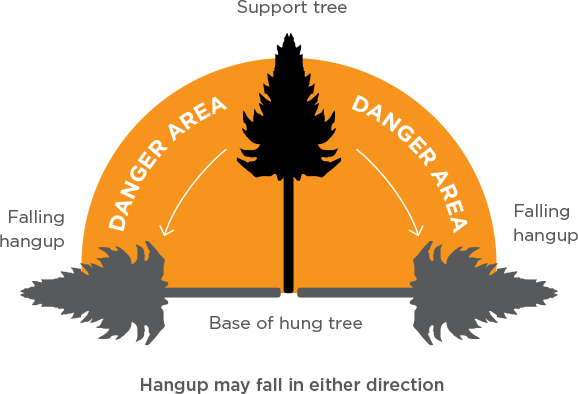Tree lopping is a dangerous and clumsy form of tree pruning that can harm trees more than help them. This unwise tree trimming is often done by homeowners or uncertified tree services.
The indiscriminate removal of branches and crown tops can leave wounds on the tree that are susceptible to insect and disease infestations, decay, and unseen sunburn beneath the bark.

Property Damage
Tree lopping is a dangerous and reckless practice that many property owners employ with the intention of reducing a tree’s size. It is typically carried out in preparation for storm damage, removing diseased or dead limbs that could cause a future risk to the homeowner’s home, or simply to reduce the height of a tree near power lines.
When a tree is lopped, the branches within the crown are suddenly exposed to sunlight in a form that they aren’t used to, causing cankers, bark splitting, and sunburn. This can result in the death of a significant portion of the tree’s branches, leaving it vulnerable to diseases and pests.
The damage to the tree’s branches also weakens its ability to chemically defend itself against insects and disease. These weakened wounds allow pathogens to invade, resulting in infection and decay.
Furthermore, when new growths emerge from the tree’s cut area, they often aren’t attached properly, allowing them to break and fall easily, damaging nearby properties and potentially injuring people.
As a result, property damage is a major financial risk with tree lopping. It can lead to large out-of-pocket expenses and increased insurance rates. This is why it’s important to hire a professional tree services company that will ensure a proper risk assessment is taken prior to any work being done.
Injury to the Tree
Tree lopping and the pruning of trees are highly dangerous tasks without proper training or experience. The risks include falling branches, injuries from sharp saws and power equipment, improper handling of limbs, and the risk of debris falling onto people or property.
Injuries from tree limbs can be severe, causing cuts or wounds, blood loss, infection, and damage to the eye. Falling limbs can also be fatal, especially when they snag in nearby trees and hang up or snare the person who is felling the tree.
Wounds to the bark are often small but can be a sign of serious disease or decay in the tree. These wounds break the bark, which then breaks down and allows microorganisms to enter the tree.
The tree will attempt to close the wound by building a callus around the wound. This process called CODIT, or compartmentalization of decay in trees helps keep tree bark, food-conducting tissues, and stems healthy.
The best way to reduce the chance of injury from tree wounds is to prune trees with a sound pruning technique that limits the length of branch wounds and leaves the trunk intact. This will help the tree to set up defensive walls to prevent decay fungi from entering. It will also help to seal the wound from nutrient loss and water evaporation.
Legal and Regulatory Issues
Trees are a beautiful and beneficial addition to any property, but when a tree is too large it can be dangerous for the homeowner or other people on the property. Lopping is a common practice to reduce the size of trees that are causing issues. However, tree lopping is also a risky process that can lead to injury and even death for both the tree and the people on the property.
First, tree lopping is often done without proper pruning techniques, leaving wounds that trees cannot heal. This creates a lot of stress for the tree and can result in the rot that spreads to the trunk. Secondly, tree lopping reduces the number of leaves on branches (foliage) which functions as a natural sunscreen for the tree.
Lastly, tree lopping can be harmful to the health of your tree because it reduces its ability to create food and energy. As a result, the tree will become stressed and will struggle to create new growth.
This can result in decay and disease that can kill the entire tree. It can also expose the tree to environmental dangers and can cause damage to electrical lines or houses that are nearby. In these cases, the City of Seattle counts on people to report illegal tree lopping.